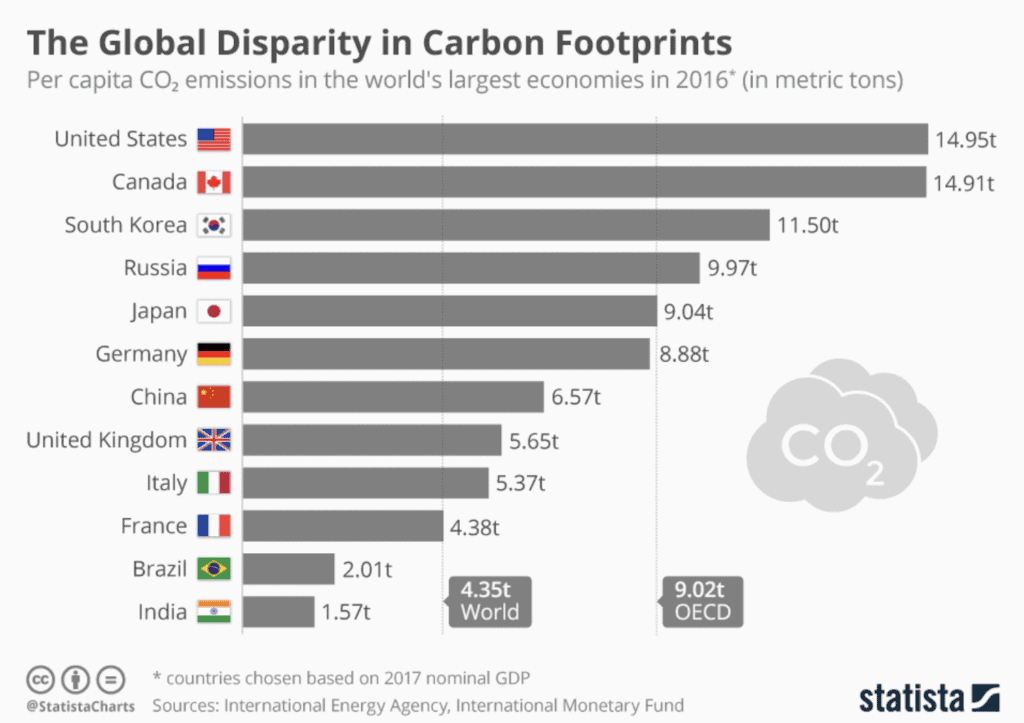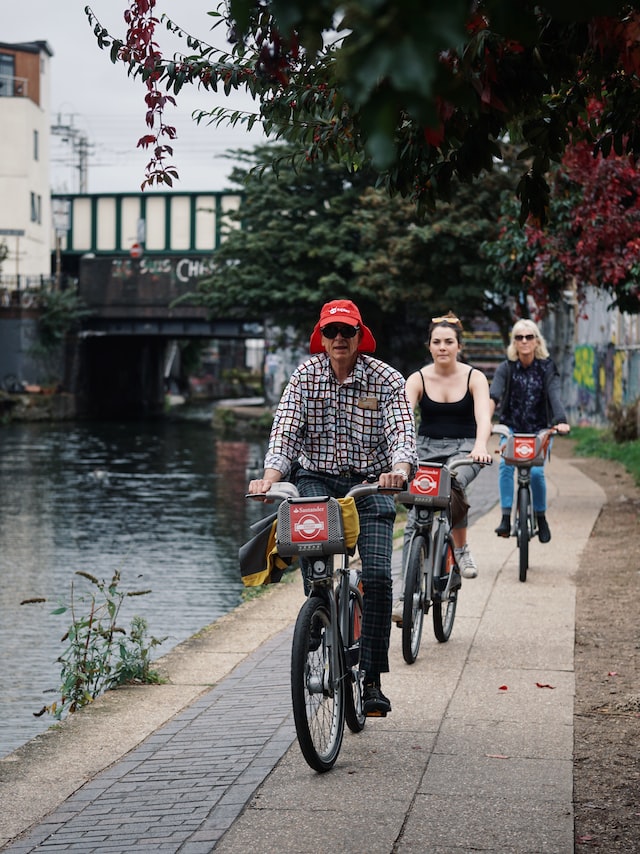Every person in the world has a carbon footprint.

Personal spending on housing, travel, food, products and services pays for two thirds of global greenhouse gas emissions. And people have the power to drastically reduce their own personal footprint if they choose to.
Here are some ideas:
1. Get some perspective
Half the average American’s personal footprint results from just four things: driving, electricity, natural gas and red meat. Calculating your own carbon footprint will help you prioritize the easiest ways to improve your footprint. Sure, we advocate for general eco-living, but make sure you take care of the big stuff before agonizing about the smaller stuff.
2. Stuff your face
In wealthier countries consumer food waste is around 100kg a year per person, or about 20% of total food supply. If we simply eat more of the food we buy we cut our foodprint, our grocery bills and our trash production.
3. Eat the earth
A serving of red meat or cheese can have a carbon intensity more than ten times higher than a low carbon grain or fruit. Eating more low carbon foods can slash your foodprint and improve your diet.
4. Make yourself comfortable
A super insulated Passivhaus uses just one tenth of the heating energy of a modern house. Improving insulation and air-tightness in your home will lower emissions, cut heating bills and improve comfort.
5. Let your home chill out
If you drop your thermostat by 1ºC (1.8ºF) in winter you’ll use about 10% less heat. By heating the rooms you need at the times you need them you can reduce your heating emissions and bills. In fact, we’re also advocates of making sure the upfront cost of a home that contains embodied energy is as low as possible for the sake of carbon – not just the operating costs of heating and cooling.
6. Get on your bike

Electrified public transport, full buses and bicycles are typically the lowest carbon forms of transport. For cars, using a hybrid or electric car with low carbon electricity can more than halve driving emissions.
7. Love your local
Flying can rack up huge carbon footprints in a hurry. Any avoided flight will take a chunk out of your carbon footprint. Quitting flying altogether is tough, but flying less frequently is often easier to achieve.
8. Buy great stuff
A low carbon product can be second hand, use low carbon materials, be extremely efficient or just so damn good that it lasts ages. Choosing quality over quantity is a good place to start cutting product emissions. Another way with respect to buying things is to focus on zero waste – buying second hand, recycling, avoiding packaging etc.
9. Do more with less
Low carbon electricity is central to living well on a small carbon budget. If your grid mix is quite carbon intensive then producing or buying it is a great way to reduce your footprint.
10. Watch your watts
The average American, Australian or Canadian consumes about ten times more electricity in their home than a Chinese or Indian does. If you really watch your watts you may be able to take chunks off your usage and its footprint.
11. Pay the man
Services are the least carbon intensive way to spend money. By paying people more and spending less on fuel, power or food you can significantly reduce your carbon footprint.
12. Pick other fruit
Carbon offsets are controversial with good reason. But if they are correctly motivated and well researched they can be a cost effective way to reduce emissions, over and above your own footprint.
13. Tap your talent
Mankind produces greenhouse gas emissions in a great diversity of ways, so the solutions must also be diverse. We each have unique talents we can bring to the climate challenge, so what are you waiting for?
Lindsay Wilson
I founded Shrink That Footprint in November 2012, after a long period of research. For many years I have calculated, studied and worked with carbon footprints, and Shrink That Footprint is that interest come to life.
I have an Economics degree from UCL, have previously worked as an energy efficiency analyst at BNEF and continue to work as a strategy consultant at Maneas. I have consulted to numerous clients in energy and finance, as well as the World Economic Forum.
When I’m not crunching carbon footprints you’ll often find me helping my two year old son tend to the tomatoes, salad and peppers growing in our upcycled greenhouse.
